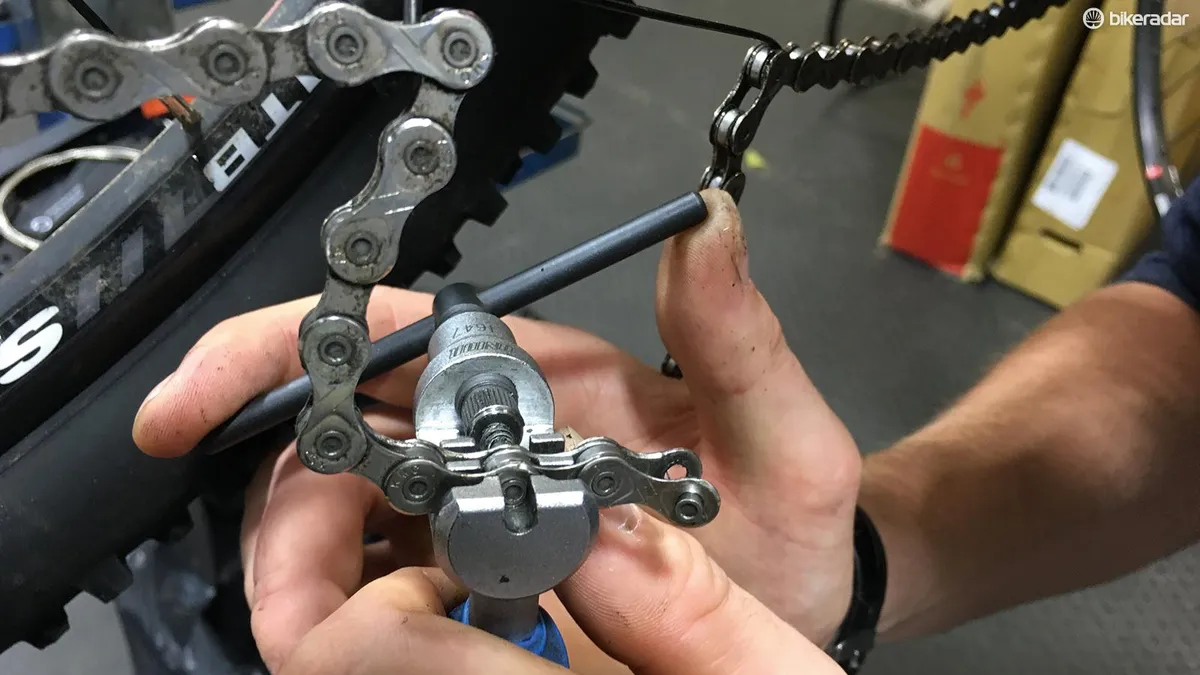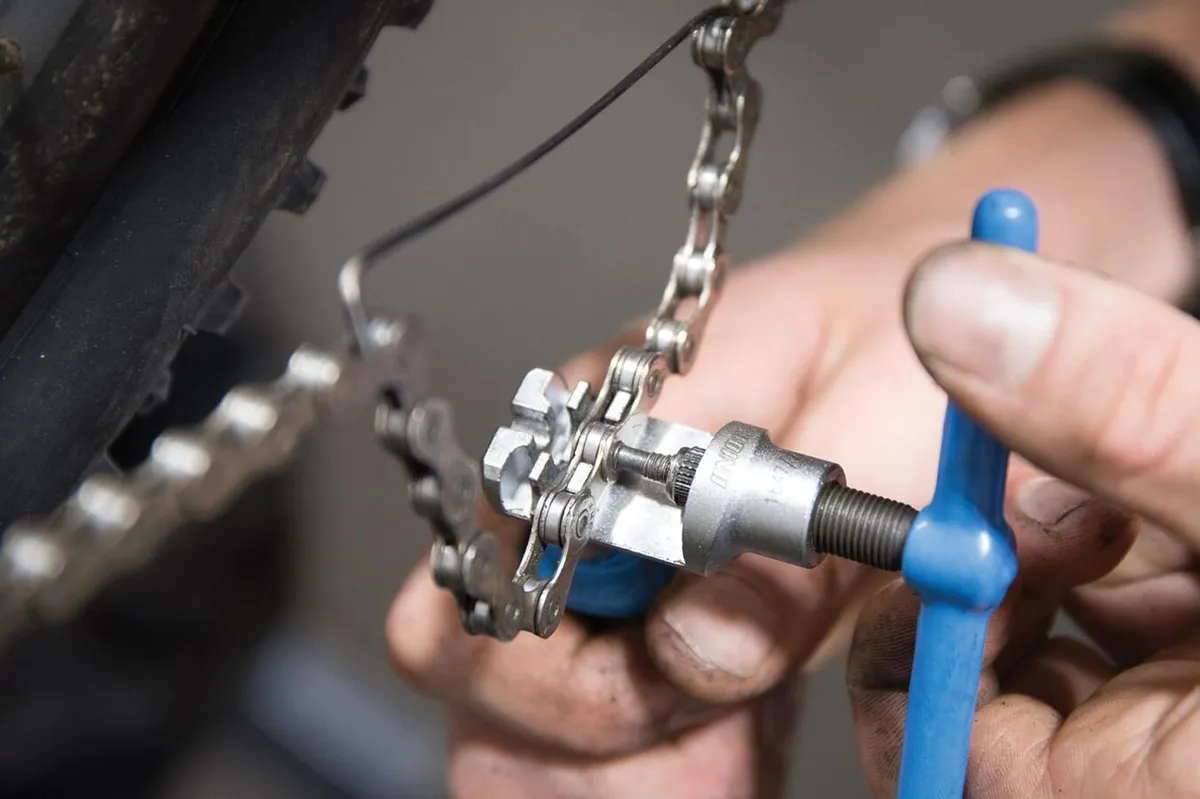If you've snapped a chain or your chain is jumping, follow our steps below for replacing the affected chain link.
You'll need (depending on chain):
- Chain hanger/bent spoke
- Chain tool
- New chain link
Step 1

If your chain has snapped, it’ll be pretty obvious where the broken link is. If it’s just skipping, you’ll need to identify the damaged link.
Back-pedal the cranks and when the offending link passes over the rear mech’s jockey wheels the chain will jump.
Step 2

Modern SRAM mechs have a ‘Cage Lock’ to take the tension out of the chain. On other mechs, you’ll need to use a chain hanger/bent spoke to hold the chain ends together, with some overlap (switch the clutch off first on Shimano Shadow Plus mechs).
Step 3a

Step 3a: Remove the broken link
If you have a master link (or quick link), ensure that the broken link is on the upper section of chain (above the chainstay). Then use a chain tool to push out the pin holding the broken outer link to the next inner link (turning it clockwise).
Remove the chain tool and the broken link.
Step 3b

Attach a master link plate to each end of the chain, ensuring that they face in opposite directions. Push them together until they lock.
Put weight on the forward pedal while holding the rear wheel still. This should tension the chain and snap the master link into place.
Step 4a

If you don’t have a master link, you’ll need to remove the broken link and rejoin the chain.
Ensure that the broken link is on the lower section of chain (below the chainstay). Use the Cage Lock or a chain hanger to de-tension the chain, so that the ends hang down.
Step 4b

On the end with the broken link, find the next undamaged outer link and use a chain tool to push the nearest pin just far enough (clockwise) so the inner link can be removed. (On a skipping chain, first break it by pushing one pin of the damaged link fully out.)
Step 4c

Align the inner link at the other end of the broken chain with the pin you’ve just pushed through the outer link.
Use the chain tool to push the pin back through the new link until it’s almost flush. If the link is stiff, wiggle it from side to side until it moves freely.
Note that reusing an existing pin is fine to get you home but is not recommended as a permanent fix with modern, high performance chains. If in doubt, always adhere to manufacturer guidelines as chain failure can lead to injury.
What's a master link?

Chains consist of pairs of inner and outer plates, joined with pins. A master link takes the place of a pair of outer plates and can be fitted easily by hand, which is great for fast trailside fixes.
Check out our video on changing chain links on Shimano, SRAM and KMC chains below.
Don't let a snapped chain end your ride


